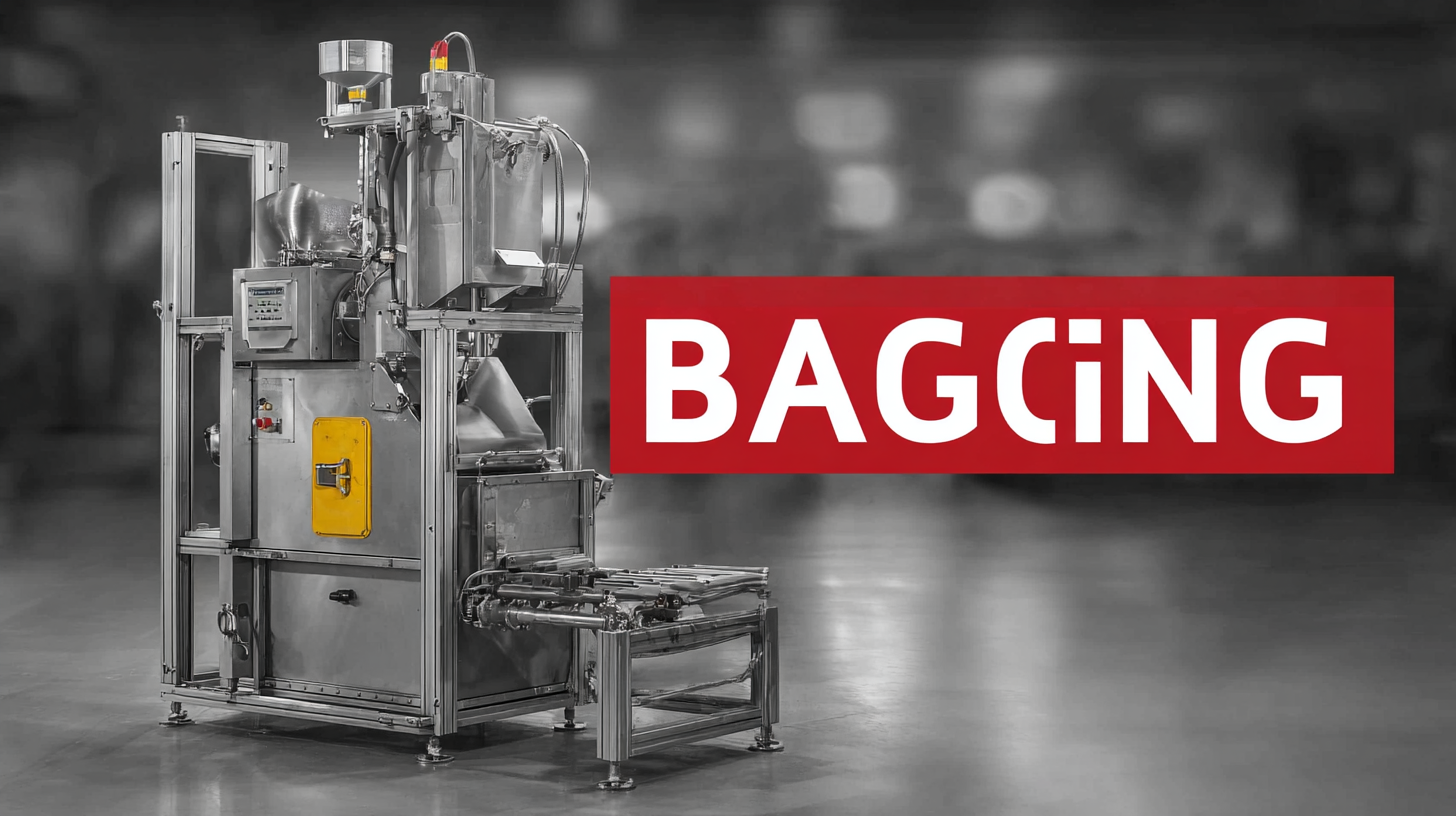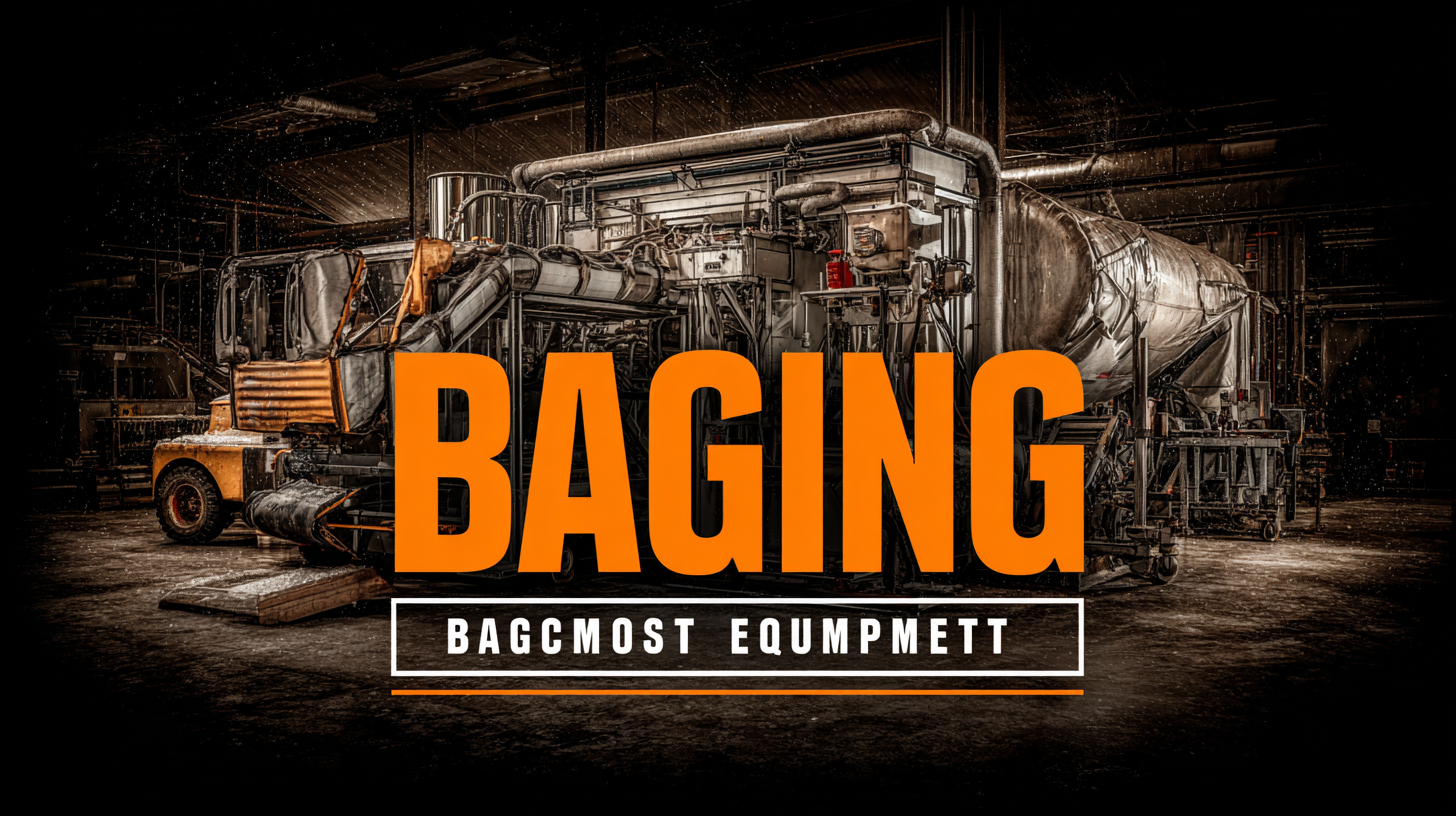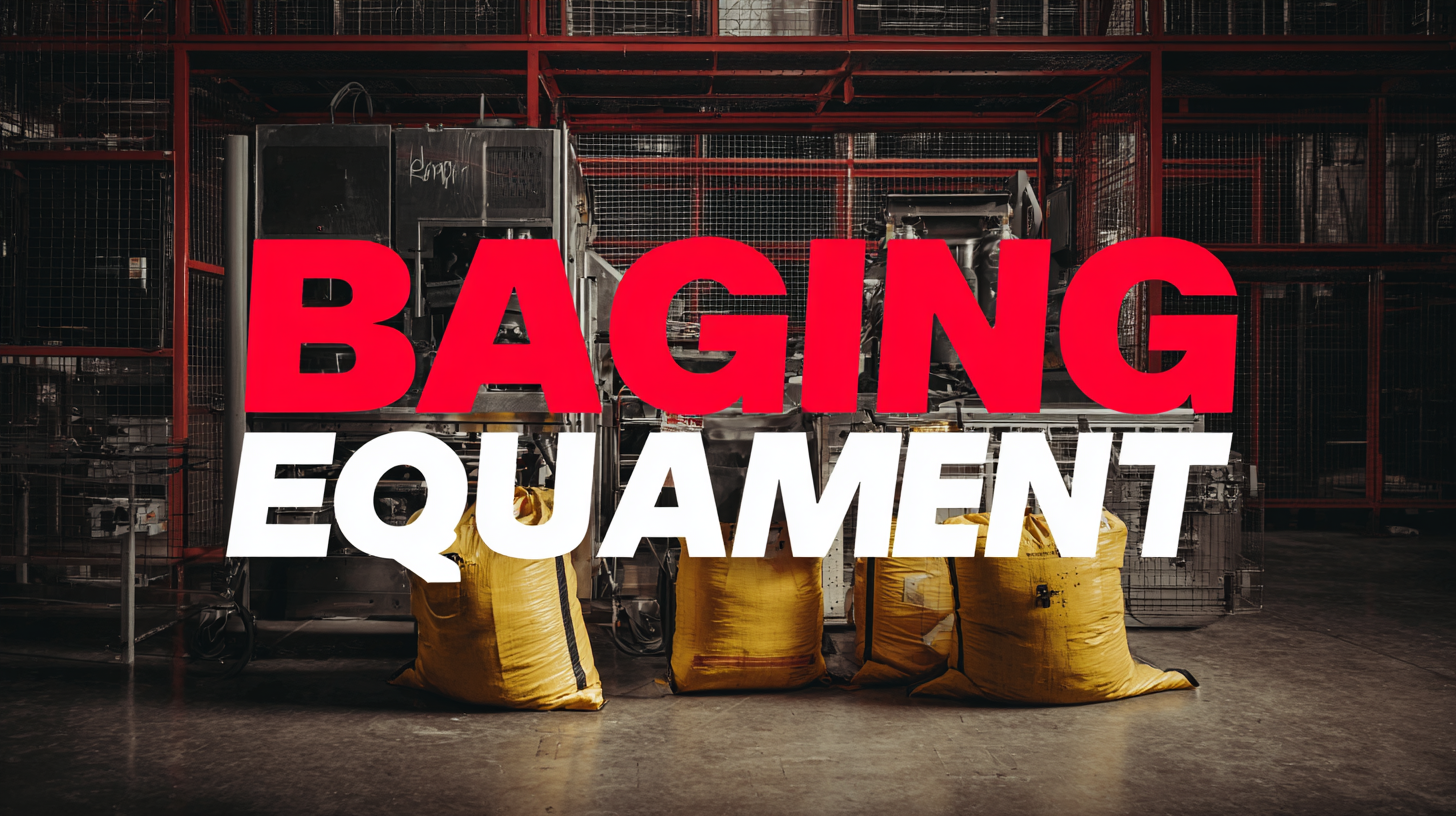ProMach is your partner from start to finish. Our product brands are grouped into distinct business lines that make the most sense to our customers, covering every function of the production line: Filling, Bottling & Capping, Decorative Labeling, Flexibles & Trays, Pharma, Handling & Sterilizing, Labeling & Coding, Robotics & End of Line, and Systems & Integration.
learn moreUltimate Guide to Choosing the Best Bagging Equipment for Global Procurement Success
In today's rapidly evolving global market, selecting the right Bagging Equipment is crucial for businesses aiming to optimize their procurement strategies and enhance operational efficiency. As organizations expand their reach and face increasing demands for efficiency and quality, the need for effective bagging solutions has never been more pressing.

In this ultimate guide, we will explore various types of bagging equipment available in the market, from manual to fully automated systems, and highlight the key factors that procurement professionals must consider when choosing the best options. By understanding the nuances of each type and evaluating their capabilities, businesses can ensure they make informed decisions that align with their production goals, reduce costs, and improve overall supply chain performance.
Whether you're a seasoned procurement specialist or a newcomer to the field, this guide will equip you with the knowledge needed to make the best choices for your organization's bagging requirements.
Emerging Technologies Shaping Bagging Equipment for 2025 and Beyond
As we progress towards 2025, the landscape of bagging equipment is set to transform significantly, largely due to emerging technologies that promise enhanced efficiency and sustainability. The integration of artificial intelligence and automation is leading this evolution, allowing for smarter operations that minimize human error and waste. These advancements will not only streamline the packaging process but also enable manufacturers to adapt quickly to shifting market demands, positioning them for success in the global marketplace.

Furthermore, the rise of data-driven decision-making will empower businesses to optimize their bagging processes. With advanced analytics, companies can monitor performance metrics in real-time, allowing for proactive adjustments that improve product quality and reduce costs. As the demand for eco-friendly packaging grows, advancements in material science will also play a crucial role, enabling the development of biodegradable or reusable options that adhere to sustainability goals while meeting the needs of consumers. The future of bagging equipment not only hinges on technological integration but also on a commitment to responsible practices that align with evolving consumer expectations.
Key Factors in Selecting the Right Bagging Equipment for Global Markets
When selecting bagging equipment for global markets, it is imperative to consider several key factors that can significantly influence procurement success. First, the type of material being packaged plays a crucial role. Different materials, whether food items, chemicals, or consumer goods, require specific bagging solutions tailored to their characteristics. Understanding the material's properties will guide the choice of equipment capable of handling them efficiently, ensuring quality and safety.

Another important factor is the scalability and adaptability of the bagging equipment. As global demand fluctuates, organizations must select equipment that can easily scale up or down. This adaptability not only supports flexible production rates but also helps in responding to market trends swiftly. Additionally, investing in technology that integrates well with existing systems can enhance efficiency and reduce downtime, promoting streamlined operations across international supply chains. By focusing on these factors, businesses can strengthen their market position and achieve lasting procurement success.
Innovative Features to Look for in Modern Bagging Solutions
When choosing bagging equipment for global procurement, it’s essential to focus on innovative features that enhance efficiency and usability. Modern bagging solutions are designed with advanced technology that not only improves speed but also enhances the accuracy of the bagging process. Look for features such as automatic weight control, which ensures every bag meets precise weight specifications, ultimately reducing waste and improving customer satisfaction.
Another crucial aspect to consider is the flexibility of the equipment. Choose bagging machines that can accommodate various bag sizes and types. This adaptability allows businesses to respond quickly to changing demands and diverse product line requirements. Additionally, machines equipped with user-friendly interfaces and smart diagnostics can make training operators simpler and reduce downtime in case of mechanical issues.
Lastly, consider the importance of sustainability in your procurement choices. Many modern bagging solutions incorporate eco-friendly materials and processes, helping businesses to not only cut operating costs but also contribute to environmentally responsible practices. Look for equipment that minimizes energy consumption and uses recyclable materials for packaging, aligning your operations with global sustainability goals.
Sustainable Practices in Bagging Equipment for Eco-friendly Procurement
In an era where eco-friendliness is a priority for businesses globally, incorporating sustainable practices in bagging equipment is crucial. According to a report by Research and Markets, the global eco-friendly packaging market is projected to reach $500 billion by 2025, reflecting an increasing demand for sustainable solutions in various industries, including agriculture and manufacturing. Companies are recognizing that utilizing bags made from biodegradable materials not only reduces their carbon footprint but also appeals to environmentally-conscious consumers.
Implementing sustainable bagging equipment often involves adopting advanced technologies that optimize material use and minimize waste. The Sustainable Packaging Coalition states that products designed with sustainability in mind can reduce material waste by 20% and energy consumption by up to 50%. This shift not only enhances procurement processes but also improves a company's brand image by demonstrating a commitment to environmental responsibility. As more businesses align their procurement strategies with sustainable practices, investing in eco-friendly bagging equipment is not just a trend, but a necessary step towards achieving long-term success in a competitive market.
Ultimate Guide to Choosing the Best Bagging Equipment for Global Procurement Success
Sustainable Practices in Bagging Equipment for Eco-friendly Procurement
Maximizing Efficiency: Integrating Automation in Bagging Processes
In today's fast-paced logistics landscape, the integration of automation into bagging processes is essential for maximizing efficiency and ensuring competitive advantage. According to a recent report from the Logistics Management Association, facilities that utilize advanced automation technologies have seen productivity increases of up to 30%, significantly reducing labor costs and operational bottlenecks. In particular, automated bagging systems can streamline workflows, allowing for faster processing and reduced error rates compared to traditional manual methods.
Recent partnerships within the industry highlight the trend towards cross-platform robotic automation. Companies are adopting solutions that integrate autonomous mobile robotics with existing systems to enhance operational flexibility. For instance, the collaboration between a prominent AI firm and a leading provider of warehouse robotics aims to create a seamless interface for managing bagging equipment. This type of integration not only boosts throughput but also provides real-time data analytics, enabling supply chain managers to make informed decisions quickly. By investing in such automation technologies, organizations can effectively address the growing demand for swift and accurate order fulfillment in a global procurement environment.